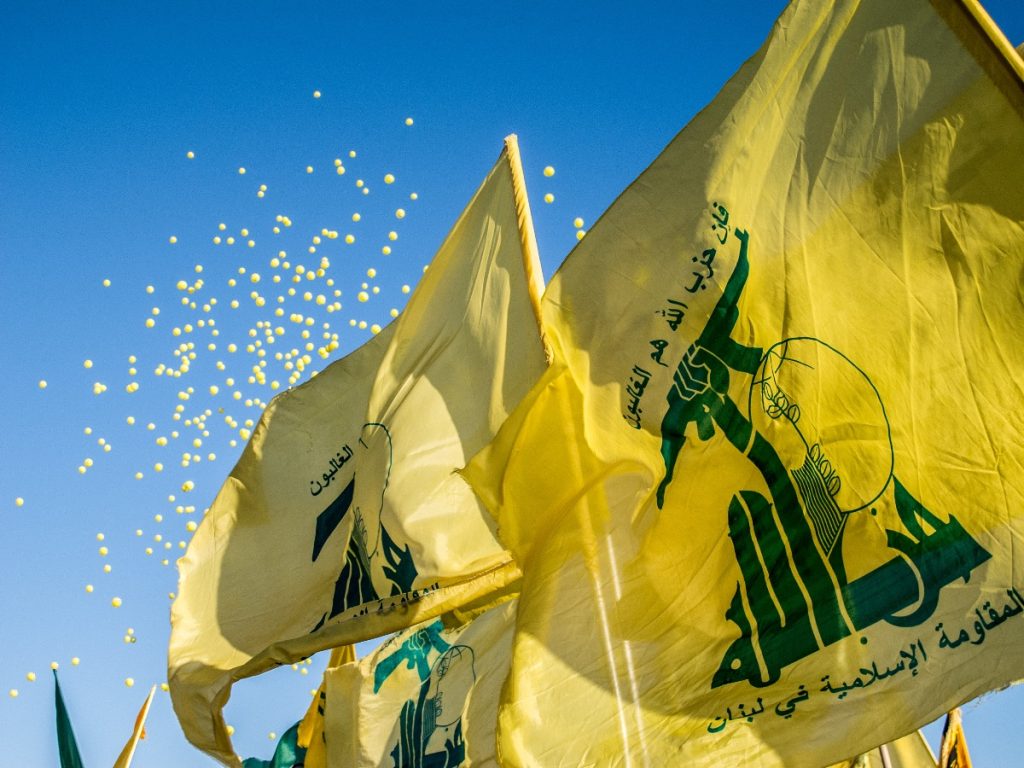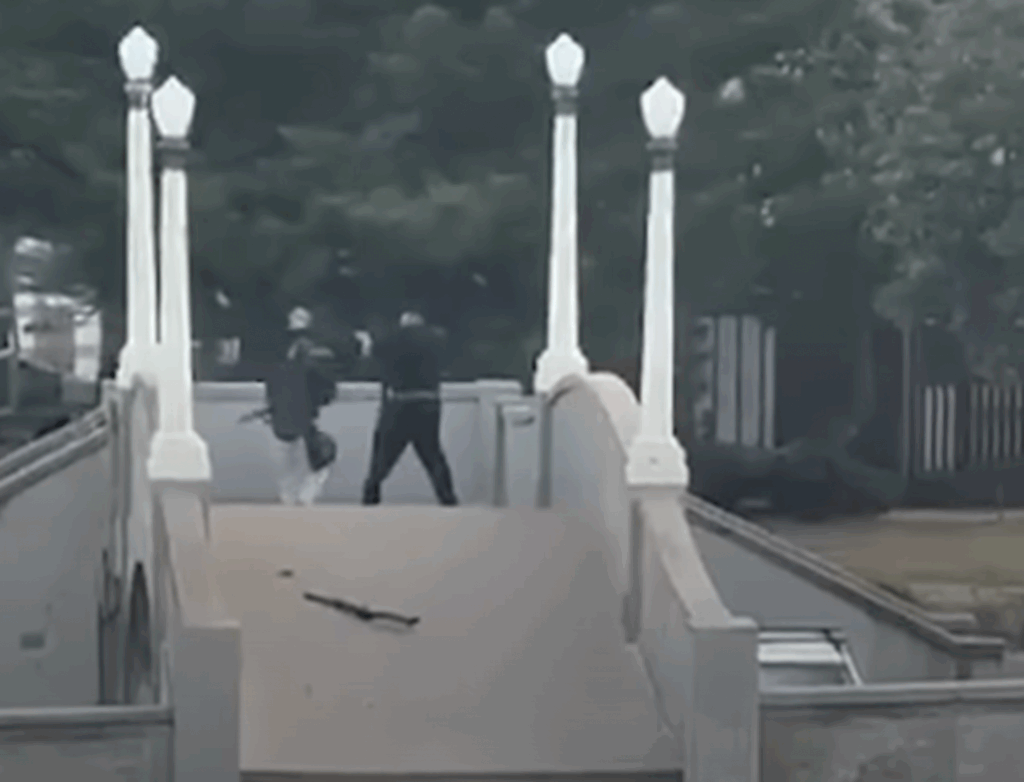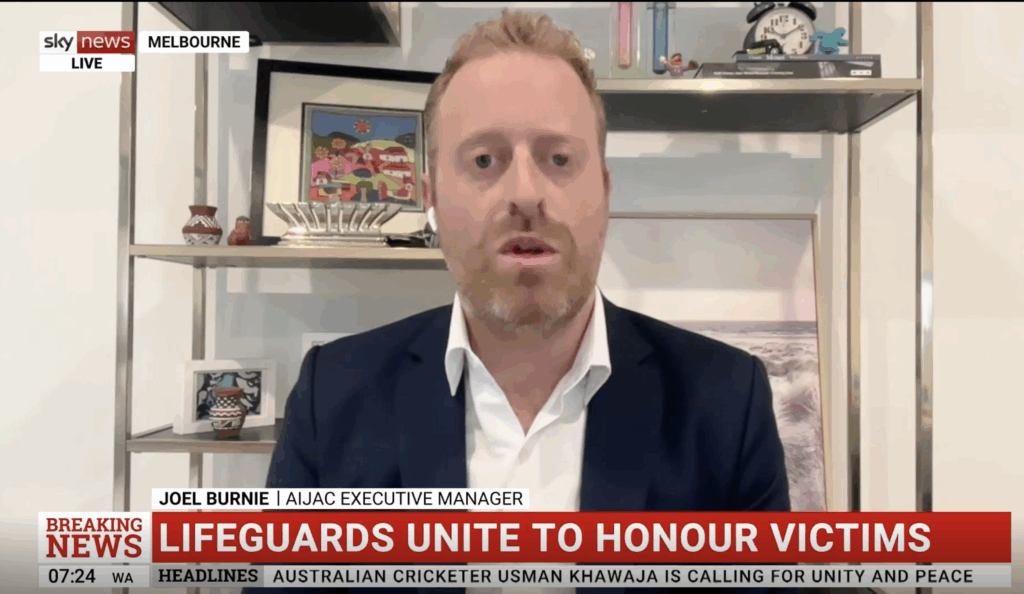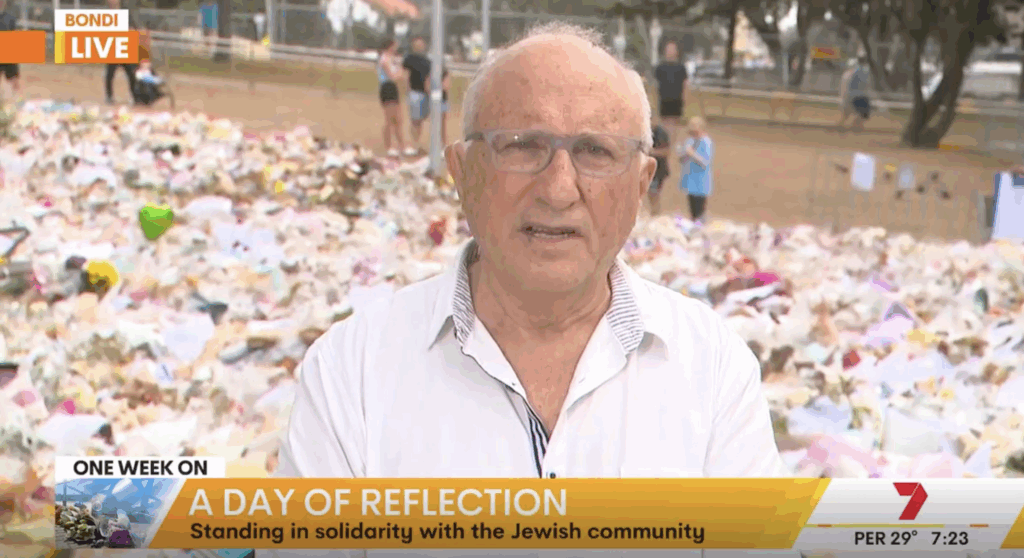UPDATES
Hezbollah’s dangerous gamesmanship
July 21, 2023 | AIJAC staff


Update 07/23 #3
Escalating provocations along Israel’s northern border by the Lebanese Iranian-proxy terror group Hezbollah and the group’s increasingly bombastic propaganda are raising questions about its intentions. Are its actions mostly for show or is it in fact prepared to risk a full scale conflict with the Jewish state akin to that which occurred 17 years ago this month, when a deadly Hezbollah cross border raid into Israel sparked a 34-day war?
Recent examples of Hezbollah’s increasingly brazen activities include revelations that, since early May, it had two tents full of militants at Mount Dov, an area Israel captured from Syria in the Six Day War but which Hezbollah claims as Lebanese territory. Israel is currently upgrading its border fence with Lebanon, which Hezbollah is objecting to and apparently seeking to actively interfere with, including by making attempts to blow up the fence. Other provocations include video footage released by Hezbollah showing its members climbing over the border fence from Lebanon and stealing surveillance equipment from an Israeli military tower and encouraging Lebanese to cross into Israel to protest. In a none too subtle message about Hezbollah’s capabilities, a video just released showed senior Israel Defence Force personnel touring the northern border earlier this week.
Today’s Update looks at the motivations for Hezbollah’s unrelenting campaign of provocations, and possible Israeli responses.
First up, Honest Reporting’s Chaim Lax traces the surge in Hezbollah’s provocations to mid 2022, when Israel and Lebanon negotiated to demarcate their shared maritime border with US mediation. Lax argues Iran is deploying Hezbollah as part of its strategy of “stoking tensions” along Israel’s borders. He identifies a long list of reasons for this escalation, including Teheran’s belief that ongoing internal anti-Netanyahu protests have weakened Israel’s military preparedness and hopes that a large scale conflict will stop Arab states further normalising with the country. To read his comprehensive summary of Hezbollah’s frenetic activity since 2022, CLICK HERE.
Next up, the Jerusalem Post’s Seth Frantzman analyses what can be gleaned from a propaganda video released by Hezbollah showing its fighters training for an attack on an Israeli military position. Although the video was distributed after Hezbollah chief Hassan Nasrallah gave a speech commemorating the 2006 war, Frantzman says it is a “retelling of the Yom Kippur War” of 1973 when Egypt and Syria launched a surprise attack on Israel. Frantzman says Hezbollah appears to believe that it is strong enough to capture and hold on to Israeli territory, which he questions. To read this important insight into the strategic thinking underpinning Hezbollah’s actions, CLICK HERE.
Finally, veteran Israeli analyst and academic Professor Eyal Zisser warns that Israel’s decision to turn a “blind eye” to Hezbollah’s provocations along the border is a mistake, and that appealing to the UN for a diplomatic solution to restrain the terror group has proven unsuccessful. Zisser argues that Hezbollah’s Hassan Nasrallah only “understands” the language of “force”. Moreover, he says, by not immediately removing Hezbollah’s tents from its territory, Israel’s deterrence capability has suffered, because Nasrallah believes the country is weak. Professor Zisser suggests Nasrallah has forgotten the lessons of the 2006 war when Israel “decimat[ed] his stronghold in Beirut.” To read Zisser’s warnings about the dangers of ignoring or downplaying Hezbollah’s reckless behaviour, CLICK HERE.
Readers may also be interested in…
- Another analysis by Seth Frantzman which explains the Syrian angle and coded messaging behind Hezbollah’s manouverings on Israel’s borders.
- Israeli President Isaac Herzog has delivered an historic address to the US Congress to mark the Jewish state’s 75thanniversary. Herzog was only the second Israeli President accorded such an honour. His warmly received speech (which can be read here) emphasised Israel’s strong and resilient democracy, the threat of a nuclear Iran, the dangers of criticism of Israel morphing into antisemitism and the challenges of the current judicial reform proposals.
- Israeli Arab commentator and human rights activist Yoseph Haddad writes that Israel’s recent two day counterterrorism operation in Jenin shows some mainstream media outlets and human rights organisations are no longer “simply delegitimizing Israel” but “openly supporting terrorism and promoting blood libel.”
- James Sinkinson also critiques the mainstream media’s coverage of the Jenin operation, arguing most of it failed to provide basic historical context.
- Foundation for Defense of Democracies analyst Enia Krivine looks at Palestinian Authority President Mahmoud Abbas’ first visit to Jenin in 11 years and says the purpose was to weaken Hamas and Palestinian Islamic Jihad’s influence over the city.
- Following Israel’s recognition of Moroccan sovereignty over the disputed Western Sahara, Morocco’s King Mohammed VI has invited Israeli PM Binyamin Netanyahu to visit, the first Abraham Accords country to do so. Also, in a significant breakthrough, Netanyahu will travel to Turkey next week to meet with Turkish President Recep Tayyip Erdogan – the first such visit by an Israeli PM since 2008.
- Some examples from the many stories and comments now appearing at AIJAC’s daily “Fresh AIR” blog:
- Watch AIJAC’s latest webinar with special guest speaker Lt. Gen. (ret.) Moshe “Bogie” Ya’alon, a former Israeli Vice Prime Minister and Defence Minister, on “Countering Iran’s Three Front Proxy War Against Israel”.
- Ahron Shapiro shows that contrary to perceptions the reelected Netanyahu Government has presided over a building boom in West Bank settlements, the reality is that sales of new housing and actual housing starts have plummeted in recent months.
- In an article for the Australian’s website, Jamie Hyams explained the context for Israel’s military operation in Jenin, arguing that the large number of deadly terrorist attacks emanating from Jenin, its booby-trapped roads and the large quantities of Hamas and Palestinian Islamic Jihad weaponry Israel captured showed why Israel was totally justified in launching the action.
The Growing Hezbollah Threat to Israel’s North

Hezbollah on parade in Beirut (Wikimedia Commons)
by Chaim Lax
Algemeiner.com, July 18, 2023
Hezbollah is one of the largest external threats facing Israel today.
Since its founding in 1982, the Shiite terrorist organization’s entrenched position in southern Lebanon has posed a continual danger to the lives and well-being of both Israeli civilians and security personnel in northern Israel.
Over the past 40 years (and, particularly, since Israel’s withdrawal from southern Lebanon in 2000), the Hezbollah threat has occasionally escalated into full-blown violence between the Iran-backed terror proxy and Israel’s military. The most dramatic example of this is the 2006 Second Lebanon War, when the terror group kidnapped two Israeli reservists and directed an unprecedented volley of indiscriminate rocket fire at Israel’s northern communities over the course of 34 days.
Between 2006 and 2022, the Hezbollah threat to Israel’s north had largely been reduced to jingoistic saber-rattling and sporadic clashes between Israeli soldiers and Hezbollah fighters. Over the past year, however, tensions have gradually risen as Hezbollah continues to escalate its threats against the Jewish state while also increasing its acts of aggression along Israel’s northern border.
From Threats to Rockets: Hezbollah’s Increasing Aggression Towards Israel
The continuing escalation on Israel’s northern border can be traced back to the summer of 2022, when Israel and Lebanon were engaged in US-mediated negotiations over contested Mediterranean waters. During the heated talks, Hezbollah continuously threatened Israel’s security if it did not halt gas production in the Mediterranean or cede to Lebanon what it was asking for.
In early July 2022, Hezbollah took it one step further by flying three drones toward a gas production vessel in the disputed Karish gas field. All three were shot down by Israeli forces.
The maritime deal was ultimately signed by Israel and Lebanon in October 2022.
In mid-March 2023, a terrorist crossed into Israel from Lebanon and planted a bomb at the Megiddo Junction, seriously injuring a 21-year-old Israeli Arab. The terrorist, later identified as being connected to Hezbollah, was killed by Israeli security forces as he attempted to make his way back to Lebanon.
Then, in April 2023, amidst an escalation in Palestinian violence in the West Bank and Gaza, Hamas fired a volley of over 30 rockets from southern Lebanon into Israel (the largest rocket attack from Lebanon into Israel since the 2006 war).
According to analysts, this rocket attack was conducted with the tacit approval of Hezbollah, which treats southern Lebanon as its own personal fiefdom.
In the days following the rocket fire, several meetings were held in Beirut (including one in the Iranian embassy) between top Hezbollah and Hamas leaders. These talks were focused on expanding cooperation between the two terror groups and discussing “the readiness of the axis of resistance,” a reference to a coalition of Iran-backed organizations in Lebanon, the West Bank, Gaza, and Syria.
In June 2023, Israelis were shocked to learn that Hezbollah terrorists had been manning a small tent encampment within Israeli territory since early April. This encampment is located between the Blue Line (the UN-recognized line of demarcation between Israeli and Lebanese territory) and Israel’s northern security fence, which is located entirely in Israeli territory, in the Mount Dov and Shebaa Farms area.
Mount Dov is a part of the Golan Heights that was captured by Israel in the Six-Day War. Even though the United Nations determined that Israel had completely withdrawn from Lebanese territory in 2000 and recognizes the mount as formerly Syrian territory, Hezbollah and Lebanon consider it to be Lebanese territory and have used it in the past as an excuse for instigating hostilities against Israel. According to regional analysts, the Hezbollah encampment inside Israeli territory is a brazen escalation that follows in line with the terror group’s recent establishment of numerous outposts along the Blue Line under the guise of an environmental organization.
Over the past year, 27 outposts have reportedly been set up on the Lebanon-Israel border (solely within Lebanese territory) by Green Without Borders, an organization whose stated purpose is to protect Lebanon’s green spaces and plant trees.
However, according to Israel, the United States, and some residents of southern Lebanon, the organization is actually a frontfor Hezbollah, and its outposts are used for surveillance of northern Israel as well as obstructing UNIFIL (the UN peacekeeping force) access to border areas that are supposed to be under its purview.
Since the Hezbollah encampment in Israeli territory became public knowledge in June, more focus has been drawn to the Israel-Lebanon border, leading to heightened tensions and clashes between Israeli security personnel and Lebanese protesters as well as members of Hezbollah.
These tensions have largely centered around Israel’s replacing its antiquated border fence with a more secure wall, and have occurred around the border areas of Kfar Chouba and Ghajar.
Over the past month, Hezbollah has encouraged Lebanese protesters to cross the border and throw rocks at IDF personnel tasked with preparing the ground for the new barrier. Short-range rockets have also been fired from Lebanon into Israel, and three Hezbollah operatives were repelled by the IDF following an attempt to breach the border fence.
Between the Megiddo Junction bombing, the approval of Hamas’ rocket attack, the tent encampment, and the recent burst of violence along the border, it is clear that Hezbollah has been purposefully heating up tensions over the past year.
Why Now?: Understanding Hezbollah’s Recent Antagonism of Israel
According to experts, there are several factors that have contributed to Hezbollah’s brazen antagonism of Israel over the past year. They include:
- Iran is looking to stoke tensions with Israel via its proxy terror organizations in Lebanon, the Gaza Strip, and the West Bank.
- The belief that, due to internal political divisions, Israel is weak and able to be taken advantage of.
- The belief that a conflict with Israel will put a stop to normalization between Israel and Arab states.
- The reduction of American influence in the Middle East.
- The desire to exact revenge against Israel for its continuous disruption of Iran/Hezbollah’s activities in Syria.
- With the return of its fighters from the Syrian civil war, Hezbollah is seeking to reassert its “resistance credentials” and also improve its public image among the Lebanese population.
- Hezbollah’s chief, Hassan Nasrallah, believes that Israel will try to avert an all-out war with the terror group, allowing him to take more risks without the fear of a full-scale response.
- Hezbollah was emboldened by what it views as Israel’s acquiescence to Lebanese demands during the maritime negotiations in 2022. It now believes that it can increase its standing by threatening war over minor territorial disputes.
Is There a Hezbollah-Israel War in the Offing?
According to the Israeli media, there is an ongoing debate within the upper echelons of the IDF as to whether a large-scale war with Hezbollah is inevitable in the near future.
For military leaders, Hezbollah’s increasing intransigence along the northern border is proof that it is gearing up for a war with Israel, while others believe that Hezbollah’s low-scale acts of aggression show that it is trying to avoid a full-blown war.
If Israel does end up going to war with Hezbollah, it would be on a much larger scale than its recent conflicts with Hamas and Islamic Jihad in Gaza.
With an arsenal of 150,000 rockets pointed at the Jewish state, experts estimate that Hezbollah could bombard Israel’s north with up to 4,000 rockets per day at the beginning of the conflict and maintain a daily barrage of 1,500 to 2,000 rockets over an extended period of time. This is between 5 to 13 times more rockets than were fired at southern Israel during its 2023 conflict with Islamic Jihad in Gaza.
In addition, a full-scale conflict with Hezbollah could involve the use of explosive-filled tunnels to hinder the use of Israeli land forces or an attempt by Hezbollah to enter the Mount Dov area or other parts of northern Israel and gain temporary control.
In the meantime, as the prospect of war looms, Israel seems intent on diffusing the tension by not engaging directly with the Hezbollah encampment (preferring to use international intermediaries) and only using force on its border when absolutely necessary.
The author is a contributor to HonestReporting, a Jerusalem-based media watchdog with a focus on antisemitism and anti-Israel bias — where a version of this article first appeared.
What does Hezbollah’s ‘attack video’ on Israel reveal? – analysis

Screenshot of a Hezbollah video depicting a cross-border ambush of an Israeli vehicle
This is merely the latest iteration of Hezbollah media content showcasing the terror organization’s known strategy and known weaponry.
By Seth Frantzman
Jerusalem Post
July 17, 2023
Hezbollah released a video on Sunday that shows the terrorist group training for an attack on an Israeli military position, shedding light on its beliefs about its own capabilities.
The video was published after a speech by terrorist leader Hassan Nasrallah was aired, relating to the anniversary of the Second Lebanon War (2006). It comes amid tensions on the Israel-Lebanon border and attempts by Hezbollah to stir up provocations, such as setting up a tent in the Mount Dov area and bringing Lebanese politicians to the border.
Hezbollah’s video a retelling of the Yom Kippur War
The video, though, does not actually harken back to 2006; in essence, it is actually a retelling of the Yom Kippur War (1973), when Syria and Egypt attacked Israel.
In the video, the fighters are preparing for battle in their own bunker near the border, after which they move out to attack, using a heavy machine gun, a rocket, and a Shahed-style drone to strike at a mock-up of an Israeli military outpost. The drone is similar to those that Iran has sent to Russia to use in the invasion of Ukraine.
The video also shows Hezbollah using optical observation devices and an anti-tank missile, as well as mortars. The fighters then raid the outpost and “capture” it. A Hezbollah vehicle shows up at the end to mark the victory. Throughout the “battle,” the Hezbollah members suffer no casualties, and there is no resistance to their assault.
According to the military mentality revealed in this video, Hezbollah estimates that the next conflict with Israel will be about territory, and it expects to be successful in grabbing some.
This mentality is not new; it is a concept of battle that is well-known in its doctrine. In this case, Hezbollah is trying to build on past conflicts with Israel and others. In 2006, Hezbollah ambushed a patrol on the border; today, it wants to go beyond that, and it thinks it has improved its capabilities to the point that it can fight a conventional war with Israel.
Pro-Hezbollah media repeatedly have said the group believes it has gained experiences to make this possible. A recent article at Al Mayadeen detailed how Hezbollah thinks Israel invested heavily in defenses – e.g., with Iron Dome – and that its offensive capabilities rely too much on technology. Hezbollah currently has stockpiled masses of missiles and has outfitted its fighters with rifles, mortars, drones, and other systems.
YET the most poignant thing that this video shows is that Hezbollah ultimately relies more on propaganda than on actual threats. It has become so institutionalized in Lebanon – effectively controlling the south as well as the country’s ability to democratically elect a new president – it has to sit astride two different types of policies.

Screenshot of a Hezbollah video intended to display their battle readiness
Our fighters are ready, Hezbollah says
On the one hand, it has to continue to be a terrorist “resistance” force, one that operates underground. On the other hand, it has to continue to operate stunts along the border, enabling people to riot, trying to damage the border fence, or setting up tents.
It must do these two things at once, and this is why it is also publishing these kinds of videos about its militant-terrorist capabilities. It wants to show that the antics of putting up tents and inviting members of the Lebanese government to tour the border and create provocations is not making Hezbollah soft.
Hezbollah showcased with this video that it has its fighters ready. That it used a drone in the video shows it is using the same Iranian technology being sent to Russia to terrorize Ukrainians. But Hezbollah should look at Russia’s failure in Ukraine if it wants to understand how drones like the Shahed are not actually helping Russia win the war.
If Hezbollah is trying to borrow from the Iranian drone doctrine, it would do well to note that Iran’s drones didn’t win the war in Yemen, Ukraine, or in Iraq and Syria. In fact, Iran uses drones to terrorize and harass but never to win wars.
Similarly, Hezbollah has set upon a strategy in the video of trying to “conquer” places where it doesn’t think it will meet resistance so it can wave its flag and claim empty “victories.”
This is not to say the group is not more powerful and dangerous than in the past, but rather that it prefers more boasting and propaganda videos for the sake of relevance. It has done this in the past; this is merely the latest iteration, showcasing Hezbollah’s known strategy and known weaponry.
Nasrallah’s gamble has paid off, but it’s not too late to act

Hezbollah leader Hassan Nasrallah appears confident that his battle hardened fighters can take on Israel in a military conflict. (Photo: Wikimedia Commons, khamenei.ir)
Israel’s lack of response to the provocations is a mistake and the effort to bring about a diplomatic resolution is a joke. People like Nasrallah only understand force
By Prof. Eyal Zisser
16 July 2023
The 17th anniversary of the Second Lebanon War was marked several days ago. For the first time since that conflict, Israel now faces a real prospect of yet another conflagration that could become the Third Lebanon War.
Like in 2006, no side wants war. Not Hassan Nasrallah, who is still scarred from the IDF’s onslaught in the previous round, and not the Israeli government, who is knee-deep in domestic issues.
It seems that Hezbollah resolved to escalate things back in March when it apparently sent a terrorist across the border to stage an attack. Only by some miracle, was Israel spared a mass-casualty event when the bomb exploded near the Megiddo Junction.
Israel chose not to respond to that attack, which Hezbollah saw as weakness. It also strengthened Nasrallah’s view that he can act with impunity against the Jewish state.
The following rocket attack from Lebanon, which was conveniently attributed to Hamas, gave him plausible deniability.
Now Israel finds itself having to deal with tents pitched by Hezbollah on Israeli territory in what is the first step toward a battle to conquer the entire Galilee, a recurring theme in Nasrallah’s speeches.
Cross-border incidents were very common in the 1950s when the borders were very porous and had almost no real barriers and early-warning systems. But back then we had a larger-than-life prime minister, David Ben-Gurion, who instructed the IDF to retaliate immediately every time people crossed into our territory –be they Egyptian, Jordanian, or Syrian.
But nowadays Israel doesn’t have this policy, and as a result, Hezbollah has been teaching us a lesson by consolidating its presence on our land while the security establishment and the government turn a blind eye.
Nasrallah usually acts with caution and sophistication, but it appears that he has forgotten the lesson Israel has tried to sear into his memory by decimating his stronghold in Beirut – the Dahiyah – in 2006.
Moreover, being the gambler that he is, Nasrallah is now convinced that Israel is bogged down with internal strife and would not take his bait by retaliating to his provocations.
Nasrallah’s assessment has proved itself so far, and his gamble has worked. But rather than stop and cash in on his profits, he has continued playing and has raised his wager by firing an anti-tank missile on Israeli forces and repeatedly trying to sabotage the border fence. In recent days it added the disputed border town of Ghajar to the equation by saying that the Israeli control over the village (where the border runs through) is tantamount to an Israeli occupation of Lebanese territory.
Israel’s lack of response to the provocations is a mistake and the effort to bring about a diplomatic resolution is a joke. People like Nasrallah only understand force.
The fact that Israel has not chosen to resolve the issue of Ghajar over the years – it could have relocated the residents in the northern part that lies in Lebanon and given them compensation – is a sign of short-sightedness and perhaps a lack of faith in Israel’s future hold on the town (whose southern part was captured from Syrian during the 1967 Six-Day War).
Hezbollah should have been dealt with right way – as soon as the first of its members pitched up a tent on the border, and definitely before this became a month-long saga and a potential future claim to Israeli territory. But it is not too late and let’s hope that the government comes back to its senses and sets new red lines to Nasrallah, thus averting another war.





